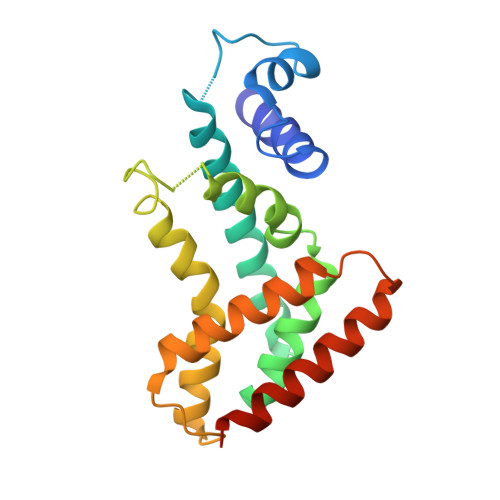Multidrug-Binding Transcription Factor QacR Binds the Bivalent Aromatic Diamidines DB75 and DB359 in Multiple Positions
Brooks, B.E., Piro, K.M., Brennan, R.G.(2007) J Am Chem Soc 129: 8389-8395
- PubMed: 17567017
- DOI: https://doi.org/10.1021/ja072576v
- Primary Citation of Related Structures:
2DTZ, 2HQ5 - PubMed Abstract:
Staphylococcus aureus QacR is a multidrug-binding transcription repressor. Crystal structures of multiple QacR-drug complexes reveal that these toxins bind in a large pocket, which is composed of smaller overlapping "minipockets". Stacking, van der Waals, and ionic interactions are common features of binding, whereas hydrogen bonds are limited. Pentamidine, a bivalent aromatic diamidine, interacts with QacR differently as one positively charged benzamidine moiety is neutralized by the dipoles of side-chain and peptide backbone oxygens rather than a formal negative charge from proximal acidic residues. To understand the binding mechanisms of other bivalent benzamidines, we determined the crystal structures of the QacR-DB75 and QacR-DB359 complexes and measured their binding affinities. Although these rigid aromatic diamidines bind with low-micromolar affinities, they do not use single, discrete binding modes. Such promiscuous binding underscores the intrinsic chemical redundancy of the QacR multidrug-binding pocket. Chemical redundancy is likely a hallmark of all multidrug-binding pockets, yet it is utilized by only a subset of drugs, which, for QacR, so far appears to be limited to chemically rigid, bivalent compounds.
Organizational Affiliation:
Department of Biochemistry and Molecular Biology, University of Texas MD Anderson Cancer Center, Unit 1000, Houston, TX 77030, USA.















